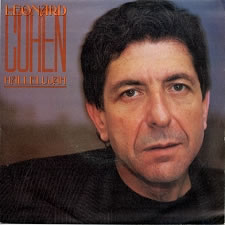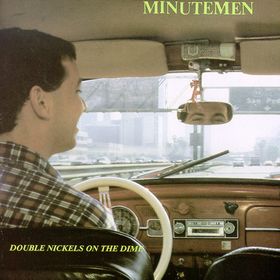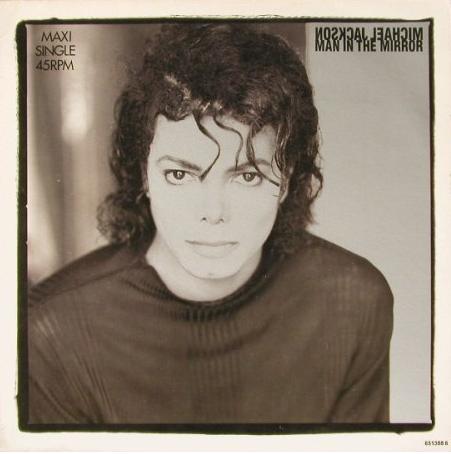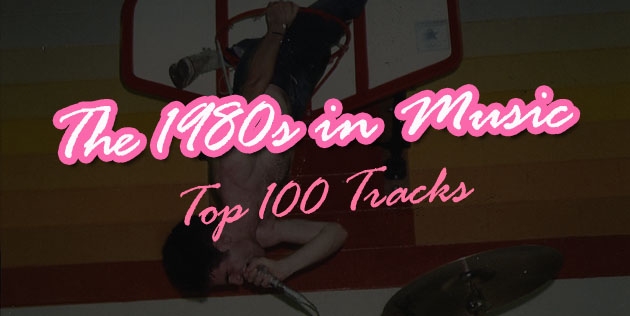

80.
Echo & the Bunnymen
“The Killing Moon”
[Korova; 1984]
From their 4th release Ocean Rain spawned one of Echo and the Bunnymen’s most well known singles, the brilliantly dark “The Killing Moon.” With true 80s style bellowing but restrained vocals from Ian McCulloch, epic guitars and an upbeat bassline, this is undoubtedly one of Echo and the Bunnymen’s best songs so it’s no surprise that it’s featured on this list. Charting at #9 at the time, it had commercial success as well as not succumbing to popular music conventions. It has also featured on cult favourite film Donnie Darko and gained more recent popularity due to this. Although Echo and the Bunnymen may have tried to top this sublime offering from an album in which the PR campaign proclaimed that this was “the greatest album ever made” and is still today regarded as the band’s most prolific body of work, as is this song.
– Aurora Mitchell

79.
Mudhoney
“Touch Me I’m Sick”
[Sub Pop; 1988]
It’s gotta be tough to peak with your first single, especially when that single more or less heralds in a soon-to-be-massive musical movement — but Mark Arm doesn’t seem to mind that much, admitting back in 2001 that Mudhoney was “never quite able to recapture that sound.” “Touch Me I’m Sick” is the Platonic ideal of grunge, a fuzzed-out, fucked-up two-and-a-half-minute masterpiece with a writhing guitar riff and Arm’s vocals bursting with grimey, honest, pent-up rage and/or sexual frustration. The more you listen to “Touch Me I’m Sick,” the more you start to wonder how Mudhoney did not become the biggest grunge band in the world; but the fact is they did, if only for a split second. And just as important, they laid the necessary groundwork for what was right around the corner.
– Jon Blistein

78.
Black Sabbath
“Heaven and Hell”
[Vertigo / Warner Bros.; 1980]
After Ozzy Osbourne was fired in 1979, many probably thought the band was over. I mean, how much more iconic can you get than Ozzy? But picking Ronnie James Dio as his replacement was not only a great choice, it reinvigorated the band. Arguably the band was better than they had been in their ‘76-79 run. Playing off the band’s earlier hit “Iron Man,” “Heaven and Hell” has a stylistically similar guitar riff. But that’s where the similarities end. Ronnie James Dio uses his vocal prowess to weave a story of the good and evil that we face in society. Using the parallels of past and modern times, it acts as a cautionary fable to show the overlapping of history. The song slowly marches along until the song breaks loose in the second half. As the tempo picks up, Dio takes control and belts out the lyrics as if being challenged by Iommi’s frantic guitar work. As the song comes to its conclusion, it fades out to a medieval-esque guitar picking. “Heaven and Hell” is not just a great single, it’s also the band playing at their best. It was also proof to anyone that had any doubts that the band could put out another good record.
– Brent Koepp

77.
Leonard Cohen
“Hallelujah”
[Columbia; 1984]
In a classic tale of major labels favoring obvious dollars and cents over the worthy but risky, Columbia Records abandoned Leonard Cohen’s Various Positions. Released on the independent Passport Records, Cohen’s seventh album contains some of his best songs ever recorded, including a little number by the name of “Hallelujah.” In recent years, “Hallelujah” has become so excessively covered that even Cohen himself has expressed displeasure with the phenomenon. Something of a cover of John Cale’s cover, thanks to Cale’s incorporation of lyrics unused in Cohen’s studio recording, Jeff Buckley’s breath-taking rendition remains the most famous rendition of “Hallelujah,” even more so than the original. However, it is Cohen’s mastery of lyrics that made the song such a classic in the first place, and while the best covers offered new interpretations, none were quite as transcendently holy as the Bible-referencing, choral original.
– Frank Mojica

76.
The Replacements
“Alex Chilton”
[Sire; 1987]
“Alex Chilton,” homage to the prolific singer/songwriter of ‘60s blue-eyed soul ensemble Box Tops and ‘70s power pop icons Big Star, captures perfectly the giddy, nervous excitement of hearing an authentic rock visionary perform live “right on campus.” Off The Replacements’ 5th studio LP Pleased to Meet Me, the cut features a spunky blend of visceral power chords, frantic rhythmic punch, and peppy handclapping.
Set against harmonic cooing, Replacements’ vocalist Paul Westerberg blasts ecstatically: “Children by the million sing for Alex Chilton when he comes ’round!” Lead guitarist Bob Stinson lays down a barrage of tasteful flourishes, only to abandon restraint for an explosive, garish solo that segues seamlessly into the song’s culminating chorus. As Stinson’s electric axe bows out to delicate acoustic strumming, Westerberg – a longtime crony of the eclectic Clinton – reveals the transformative, emotional power of pop: “They sing ‘I’m in love, what’s that song?/ I’m in love, with that song!’”
– Henry Hauser

75.
Indigo Girls
“Closer To Fine”
[Epic; 1989]
One of the less talked about musical movements of the late-1980s took place in feminine folk, when artists like Natalie Merchant (with 10,000 Maniacs) and Tracy Chapman began to see commercial success and relative unknowns like the Indigo Girls could get a major label recording deal. And while the ripples that led to Lilith Fair are easy to trace, “Closer To Fine” isn’t as easy to pin down as some of its other contemporaries. Maybe it was the employing of Irish group Hothouse Flowers for the bridge or the video in which Amy Ray and Emily Saliers play it earnest, rallying a whole town of people to stroll behind them and join in their anthem, but, somehow, “Closer To Fine” struck a chord outside of strong and independent female market, becoming one of the rare female folk songs that a dude wouldn’t have a problem with cranking up in his car. Hardly a one-hit wonder, as the group still thrives 20+ years later. No, “Closer To Fine” was a career maker, and deservedly so.
– Philip Cosores

74.
Minutemen
“History Lesson – Part II”
[SST; 1984]
Just about halfway through Minutemen’s eclectic but mostly punk magnum opus Double Nickels on the Dime, we’re hit, almost out of nowhere with “History Lesson – Part II”; without a doubt a quintessential track in the history of American rock. On this tender acoustic track we see Mike Watt and D. Boon at their most sincere and emotional as they detail the relationship of how they grew up and played music together. Along the way the pay tribute to the pioneers and prominent figures of the genre: Bob Dylan, Richard Hell, Joe Strummer, Eric Bloom, and John Doe of X.
Simple as it may be, the track is anthemic and a perfect representation of the punk rock dream. Just take a look at the opening line:
“Our band could be your life.”
After all isn’t that what every musician sets out to do? Although D. Boon has passed we should take solace in the fact that he and the Minutemen did what they loved, changed the lives of listeners, and will go on to influence other bands in the same way that Bob Dylan and The Clash influenced them. The cycle continues.
– Evan Kaloudis

73.
Bruce Springsteen
“Dancing in the Dark”
[Columbia; 1984]
It doesn’t get more ‘80s than this. Bruce Springsteen in a white t-shirt, tucked into his pants with the sleeves rolled up, dancing the whitest white-guy-dance of all time. This is the music video for Springsteen’s biggest hit, “Dancing in the Dark,” from his biggest album, 1984’s Born in the USA, and it is one of the biggest delights in pop culture history. The song itself was a huge chance of pace for Springsteen, as it incorporated some new styles into his music and embraced a pop aesthetic that had been somewhat purposefully lacking in much of his material since Born to Run; that it went on to become a runaway smash was evidence of a gamble that paid off, because despite its upbeat chorus, the themes it deals with – frustration, monotony, and boredom with a routine life – are less reassuring. It’s this stark contrast of sound and subject matter that permeates the entire record, and “Dancing in the Dark” embodies it perfectly. It also embodies the singer himself: When people parody Springsteen, whether it’s Sandler on SNL or Ben Stiller on his old TV show, it’s this specific image of The Boss that tends to present itself in the collective subconscious of pop culture: working-class, unbuttoned shirt, Average Joe; snapping his fingers, big grin on his face, dancing in the dark.
– John Ulmer

72.
Tom Petty
“Don’t Come Around Here No More”
[MCA; 1984]
Tom Petty was (and is) one of the most dependable artists in rock history, and the majority of his biggest singles follow a similar blues-based, three-chords-and-the-truth blueprint. But this oddity from arguably his best album, 1985’s Southern Accents, is all sitars, woozy vocal harmonies, and drums that sound processed but aren’t, proving that Petty was just as capable of producing enduring singles when he strayed outside his comfort zone. “Don’t Come Around Here No More” is also notable for its trippy, Alice in Wonderland-inspired video, a touch out of character for one of the most meat-and-potatoes rockers of all time.
– Sean Highkin

71.
Michael Jackson
“Man In The Mirror”
[Epic; 1987]
A lot can be said about the unambiguous imagery provided in a song like “Man in the Mirror.“ To be sure, there was certainly no subtlety about Michael Jackson’s melodramatic call to caring. However, in that same line of thought, if there was one thing that Michael Jackson had no use for in 1988, it was small gestures. Arguably at the height of his very comfortable status as music royalty, “Man in the Mirror” (from prolific song writers Glen Ballard and Siedah Garrett) was (and is) a joyous work of magnanimous proportions – though, the perceived proportions all seemed to be Jackson’s. And, really, why shouldn’t they have been? To this day, it’s a fascinating song on several different levels for the simple fact that it works as a refreshingly honest take on wrestling with one’s own ego, but (at the same time) its very conception is essentially the opposite of self-effacing. Cynically, you could have a field day with it, but the song earns your love. The dreamy production, uplifting, gospel-like atmosphere, and indisputably resonant vocal performance all coalesce into a genuine pop tour de force that leaves everything on the table, and more than deserves its much-lauded status.
– Daniel Rivera

